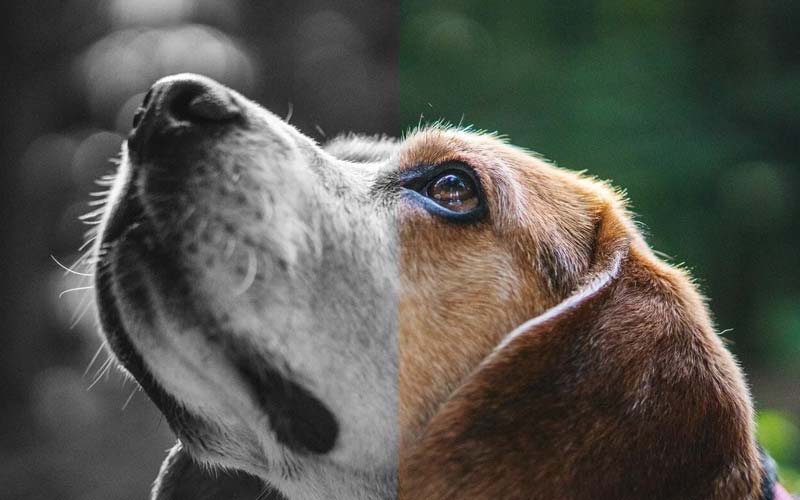Are dogs colorblind? This question has intrigued pet owners and animal enthusiasts for decades. While the popular belief that dogs see the world in black and white has been widely circulated, it turns out that this notion is nothing more than a myth. In reality, dogs do have the ability to perceive colors, although their visual spectrum differs from that of humans. In this article, we will explore the fascinating world of a dog’s color vision, debunk the colorblindness misconception, and provide insights into how our four-legged companions perceive the world.

1. Understanding a Dog’s Color Vision
Contrary to popular belief, dogs are not completely colorblind. While humans have three types of cones in their eyes, which allow us to perceive a wide range of colors, dogs possess only two types of cones. This means that their color vision is more limited compared to ours. However, this doesn’t mean that dogs see the world in shades of gray.
2. Dog Vision vs. Human Vision
The two types of cones present in a dog’s eyes are sensitive to different wavelengths of light compared to human cones. As a result, dogs have a dichromatic color vision, meaning they primarily perceive the world in shades of blue and yellow. Colors that fall within the blue and yellow spectrum are more vivid and distinguishable to dogs, while reds and greens may appear similar to them.
3. The Evolutionary Aspect
The differences in color vision between dogs and humans stem from the evolutionary adaptations that have taken place over thousands of years. Dogs, being descendants of wolves, have developed a visual system that caters to their specific needs as predators. While humans rely heavily on color vision for various tasks, such as identifying ripe fruits or discerning subtle color cues, dogs depend more on their exceptional sense of smell and hearing.
4. Exploring a Dog’s Color Perception
Although dogs may not see the world in the same vibrant palette as humans, it’s important to note that their visual abilities extend beyond just shades of blue and yellow. Dogs can still differentiate between various shades and intensities of colors within their limited spectrum. They can also perceive motion and contrast effectively, which makes them excellent hunters and trackers.

5. Debunking the Colorblindness Myth
The notion that dogs are colorblind is a long-standing myth that has been perpetuated over the years. While dogs may not have the same extensive color vision as humans, they do possess the ability to perceive and distinguish between colors, particularly in the blue and yellow range. It is essential for dog owners and enthusiasts to understand this truth to better appreciate and accommodate their furry friends’ visual perception.
Conclusion
Next time you come across the question, “Are dogs colorblind?” you can confidently debunk the myth and enlighten others about the truth. While dogs may not experience the world in the same vivid colors as humans, they possess a unique color vision that suits their evolutionary adaptations. Appreciating and understanding a dog’s color perception can deepen our connection with these remarkable animals and help us provide a more enriching environment for their senses.
Remember, dogs may not see the world as we do, but their vision allows them to navigate and interact with their surroundings effectively. So, the next time you take your furry friend for a walk, remember that they perceive the world through their own colorful lens.